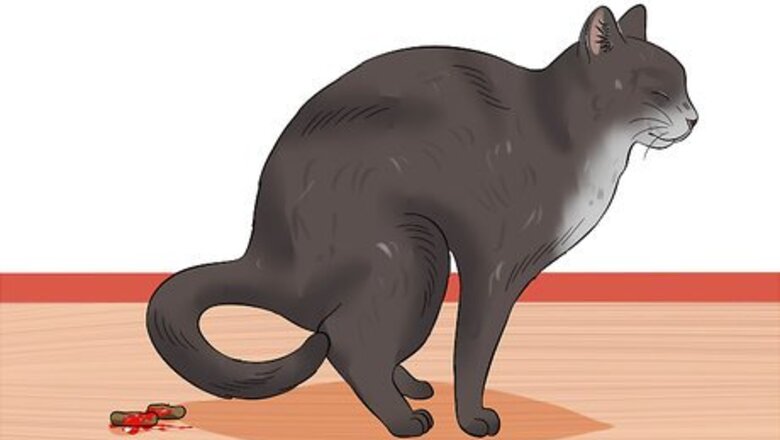
views
Identifying the Signs of Feline Panleukopenia
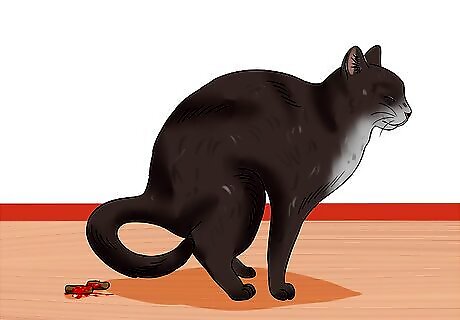
Be on the look out for severe, bloody diarrhea. There are number of signs and symptoms which are exhibited by a cat infected with feline panleukopenia. The most obvious is usually bloody diarrhea that the cat cannot control. Diarrhea is often associated with extreme dehydration. Make sure that your cat is drinking enough water and tell your veterinarian whether it is actually drinking enough water. Your cat may even just sit at its water bowl for hours but not drink, so watch the cat carefully.
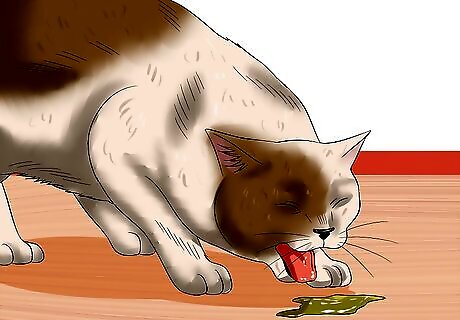
Pay attention to vomiting. The virus attacks the intestinal tract, so many signs are associated with the digestive system. Your cat may not be able to keep any food down due to digestive discomfort. Even a healthy cat is likely to vomit occasionally. Vomiting due to panleukopenia is different, however, as the cat will not stop vomiting or will vomit repeatedly over a short period of time.
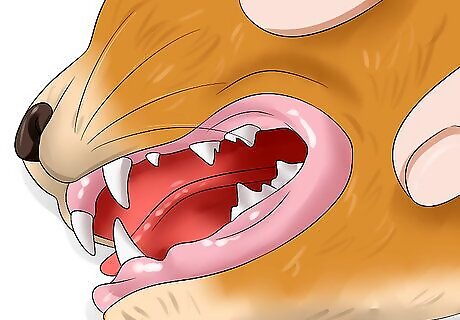
Look at your cats gums. If you suspect your cat is sick, inspect its gums. Cats with feline panleukopenia usually have pale mucous membranes and gums.
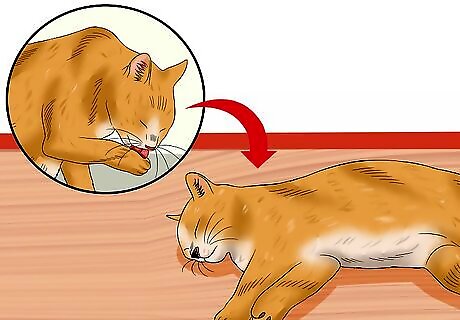
Pay attention to extreme lethargy. There are several behavioral signs of feline distemper. Problems with a cat's digestive system and overall health will impact its behavior. In the case of feline distemper, the cat will probably be exhausted. It may not move around or stick to its normal routine. This tiredness can mean that the cat won't even groom itself. Look for a lack of grooming when assessing whether you think your cat has panleukopenia.
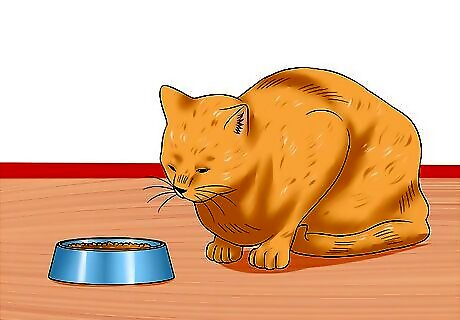
Notice a lack of appetite. A cat with feline panleukopenia will have extreme stomach and intestinal discomfort. This will probably mean that the cat is uninterested in food. If you have a cat that is always excited to eat, then this will be very noticeable. On the other hand, if you have a normally finicky eater, you may not be able to spot this symptom easily. The cat may also sit hunched over in order to alleviate digestive discomfort.
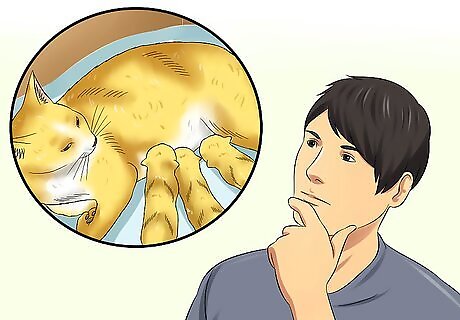
Be very diligent when looking for the symptoms in kittens. This disease is particularly hard on them. Be aware that a kitten is less likely to survive the disease, so it needs urgent veterinary attention if you suspect that it is infected. Many times a kitten with feline distemper will be found suddenly dead with no real signs of the disease prior to death. Additionally, if a mother cat is infected during her pregnancy (and survives), the kittens can develop abnormally. The cerebellum of affected kittens does not form properly leading to stillbirths, weak kittens, or kittens with an abnormal gait and body tremors.
Getting a Veterinary Diagnosis
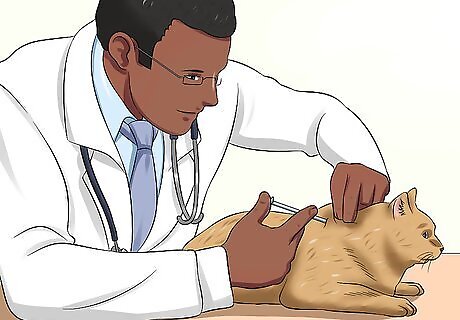
Take your cat to its veterinarian. If an unvaccinated cat or kitten contracts the feline panleukopenia, there are a number of diagnostic signs and tests that can be done to determine that the disease is causing the illness. Laboratory tests, particularly a complete blood count, will help the veterinarian diagnose the disease. On the blood count test there will be a decrease in white blood cells (the cells that fight infection), low numbers of red blood cells (due to intestinal bleeding), and decreased platelets (the blood cells that cause blood to clot.) An in-clinic test can be done on the feces of suspected cats with panleukopenia by using the canine parvovirus test as panleukopenia falls into the spectrum of parvovirus. The tests will also show that the cat is dehydrated and suffering from shock.
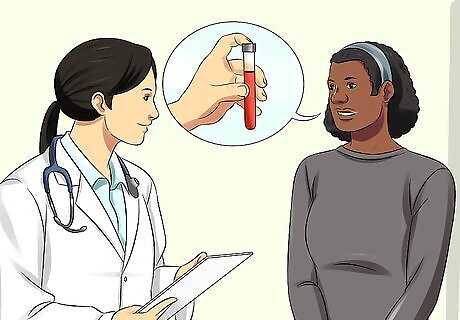
Discuss the need for additional testing with your veterinarian. There are a few other diagnostic tests that can be performed to more definitively diagnose feline panleukopenia. These are not commonly run, as with or without them the treatment your cat receives is usually the same. They are: Antibody detection tests, which detects antibodies formed by the body in response to the disease. This requires serum from the blood that is sent off to a diagnostic laboratory. A polymerase chain reaction (PCR) test can also be performed in a diagnostic laboratory on feces or tissues from deceased cats. Post-mortem examination (after death) of a cat suspected of having panleukopenia along with microscopic examination of tissue can also help to diagnose the disease.

Follow your veterinarian's suggestions for treatment. Treatment is supportive, as there is no specific medication to kill the virus. IV fluids, anti-diarrhea medications, and nutrition are usually given to the cat to make it more comfortable and to allow its immune system to more effectively fight off the infection. Many patients do not survive the illness despite attempts at treatment.
Preventing Feline Panleukopenia
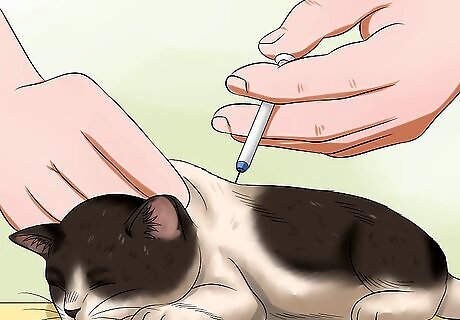
Get your cat vaccinated. There is a very effective vaccine which prevents a cat from contracting the illness. It is given to kittens as young as six weeks of age, followed by vaccination at 9 and then 12 weeks of age. The vaccine is a part of the yearly cat vaccination schedule. A vaccine is given followed by a second one in 3-4 weeks. Annual vaccination done once a year will assure the cat is fully protected against this deadly disease.
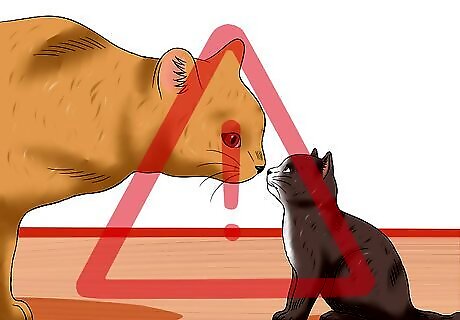
Keep young kittens away from other cats. Unvaccinated kittens need to be kept away from other cats until they are vaccinated. Vaccination usually occurs from 6 to 9 weeks of age, so your kitten should be kept isolated until that point. This isolation includes you, or another person, not bringing in the disease to the kitten on your body or clothes. You should keep from petting or interacting with other cats until your kitten is fully vaccinated. Kittens can get some immunity from their mothers before they are vaccinated. However, just how effective these immunities are is uncertain.
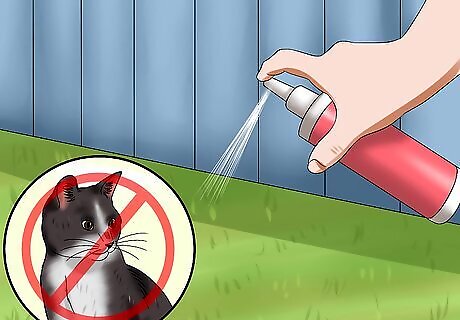
Clean areas your cat frequents. For example, keep stray cats, which may carry the disease, out of your yard by using cat deterrent sprays or water sprinklers. This is because the virus can live outside for months, or years, in cat feces. Make sure any new cats or kittens brought into your house are vaccinated. Do not allow your cat outside without vaccinations. The disease can be spread by fighting (bites) or even sharing common water sources with unvaccinated, infected cats.


















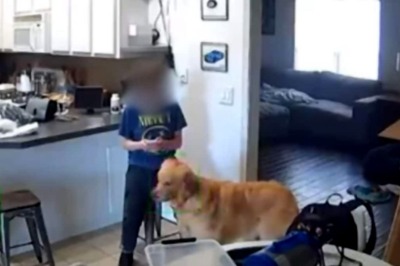
Comments
0 comment